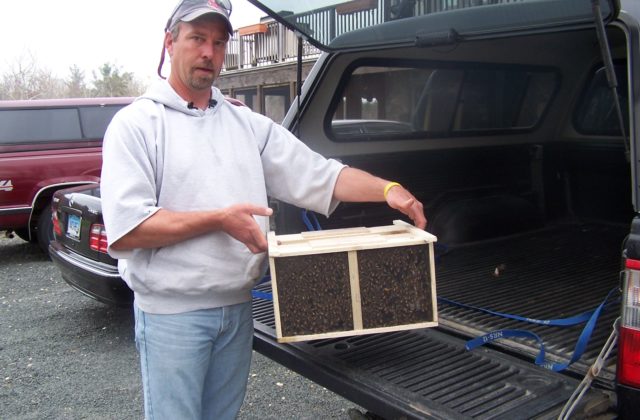What’s the Buzz? Beekeeping in Norfolk
By Star Childs
As springtime rolls into summer, our plant world breaks into full bloom everywhere. The symbiotic annual ritual repeats as bees, insects, and hummingbirds hover and fly through the landscape collecting pollen and nectar to sustain themselves. In the process they are directly responsible for the cross pollination of myriads of fruiting plants, trees, grasses, and vegetables that in turn sustain us and all life on the planet. Albert Einstein once figured that if bees suddenly ceased to exist, humankind would not survive more than four years, to say nothing of many other ecological dependents on the work of bees.
If altruism exists in our natural world, surely there is no more telling story than that of the relationship between mankind and bees. Early settlers to the U.S. brought European honeybees with them in order to establish fruit orchards and vegetable gardens that would annually produce the seed stores they would need to survive. Their foresight paid off, it seems, as the native American honeybees were far too picky to be relied on to do the job of pollinating plants unfamiliar to them.
Today, wild populations of honeybees have nearly disappeared due to a host of environmental issues not the least of which are habitat loss and invasive species. Thus, the apiarists or “commercial beekeepers” of North America have kept up the pollinating tasks in support of the U.S. agricultural industry which by Cornell University’s estimates amounts to about $14 billion in produce annually. Every third bite of food we consume has been said to be the direct result of the work of bees. And that doesn’t include the magic elixir of honey that is annually harvested everywhere. To get a sense of the work bees do in a summer, one worker bee visiting up to 100 flowers on each flight from the hive will produce just one twelfth of a teaspoon of honey! I feel guilty when I mow over clover in full bloom!
In the fall of 2006, commercial beekeepers in over 27 states began reporting that something was seriously wrong in their apiaries. Initially termed “Fall Dwindle Disease”, beekeepers began noticing that bees were leaving their hives and not returning. As statistics mounted and some keepers reported as high as 80 percent of their hives lost, the term for the problem was ratcheted up to “Catastrophic Colony Disorder”(CCD) to better describe the sudden, devastating losses of bee colonies occurring nearly worldwide. Very little is known at this time as to why the bees fly off and never return. Tests on dead bees that have been collected reveal a host of health problems best described as a total breakdown in their immune systems. Beekeepers have long been struggling to prevent a whole host of problems in their hive management such as parasitic mites, fungal infections, bacteria, and viruses, but never before had they experienced the mass exodus of their bee populations that they witnessed this past year. Some researchers postulate that the introductions of genetically modified plants which contain pesticides in their tissues could be in part to blame for bees losing their sense of orientation. Others suggest that our blanketing the landscape with wireless telephone microwave frequencies has disrupted bees’ immune systems and their ability to orient with the earth’s more subtle magnetic field. In any event, the issue has caught national and international attention of the media, and a CCD Task Force of researchers from numerous agricultural universities has been formed to try and resolve the issue.
In the meantime, we must be kind to the honey and bumble bees in our midst. Several good folks in Norfolk are struggling to maintain their own beekeeping programs with the hope of gleaning some homemade honey at the end of the season. For many of them, the return of a resident black bear population has led to its own form of catastrophic colony losses. According to Shelley Harms, she lost her hives to a black bear several times last fall, but will try again this year. Wiley Wood’s hives met the same fate last fall, but he is determined to start anew with some mail order colonies and a better electric fence wired into the CL&P grid in a new location on South Pole Farm. Ed Machowski is also beginning the age old art of beekeeping this year, and will energize a bear-proof fence around his busy, buzzing workers as well. Almost anywhere you see bee hives nowadays in the northwest corner, you will see some form of electrical deterrent to bears around the hives. Poor old Winnie the Pooh wouldn’t know what to do to find some honey. Unless the more dire threats to our pollinators are solved by scientists soon, neither will we, and higher fruit, nut, and produce prices may be just around the corner!
Photo, top, by Shelley Harms: Ed Machowski and his package of bees.

